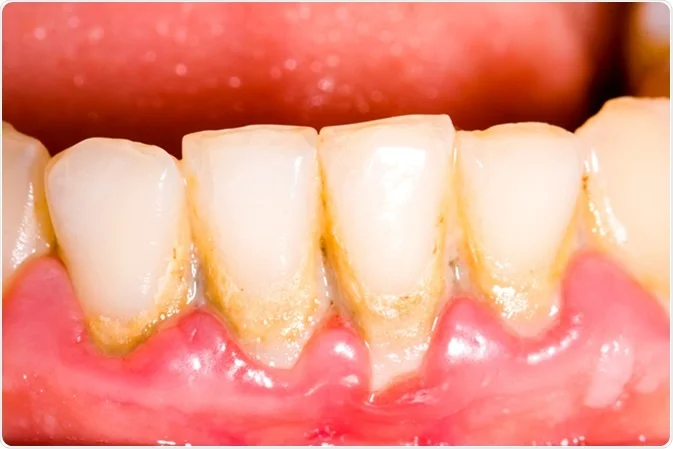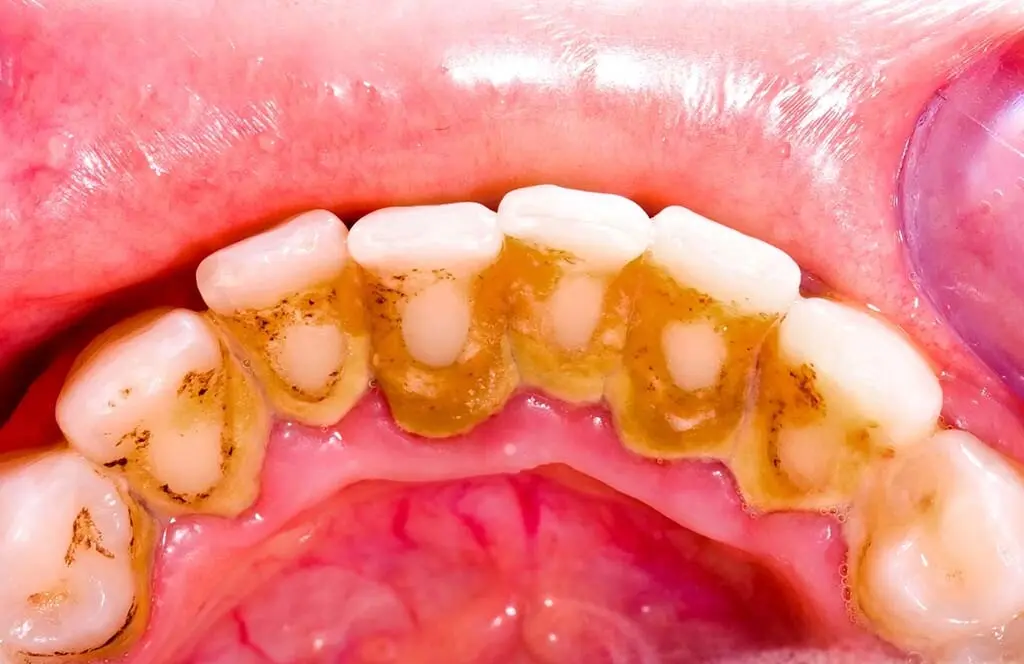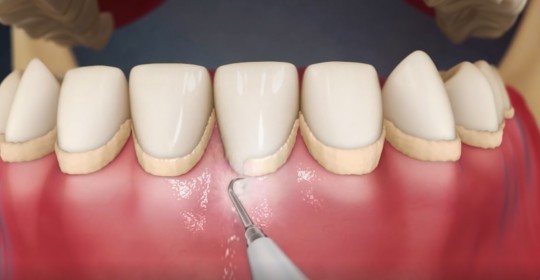A gleaming smile is a window to confidence, but its radiance can be dimmed by a persistent foe – dental calculus, more commonly known as teeth tartar. This stubborn, yellow or brown deposit clinging to your teeth is more than just aesthetically displeasing. Left unchecked, it can wreak havoc on your oral health, leading to a cascade of complications. Let’s embark on a detailed exploration of teeth tartar formation, dissecting its origins, the processes involved, and most importantly, uncovering effective strategies to keep it at bay.
Teeth Tartar: A Calcified Threat

At its core, teeth tartar is the hardened, calcified form of dental plaque. Plaque itself is a constantly forming biofilm on your teeth, a sticky concoction of bacteria, food debris, and saliva. When this biofilm isn’t diligently removed through regular brushing and flossing, it undergoes a mineralization process. Minerals like calcium and phosphate, abundant in your saliva, become integrated into the plaque, causing it to solidify. This hardened plaque transforms into the tenacious tartar, adhering tightly to your tooth surfaces and lurking even below the gum line.
Stages of Tartar Formation
The journey from harmless plaque to troublesome tartar unfolds in a series of well-defined stages:
- A Bacterial Banquet: You indulge in a delightful meal, leaving behind a trail of food particles on your teeth. These particles become a smorgasbord for the resident oral bacteria.
- The Plaque Proliferation Party: The bacteria in your mouth aren’t shy about a party. They thrive on the leftover food debris, rapidly multiplying and forming a sticky, white film of plaque on your teeth.
- Mineralization Mayhem: As the bacteria feast and multiply, minerals like calcium and phosphate in your saliva get incorporated into the plaque. This influx of minerals acts as a cementing agent, causing the once-soft plaque to harden into a formidable tartar fortress.
- Gum Line Garrison: The battleground shifts as tartar builds up, particularly below the gum line (gingival margin). This buildup irritates the delicate gum tissue, triggering inflammation known as gingivitis. If left unaddressed, this inflammation can escalate to a more severe condition – periodontitis, a gum disease characterized by progressive bone loss around the teeth.
The Grim Consequences of Untamed Tartar
Ignoring the presence of tartar can have far-reaching consequences for your oral health:
- Gum Disease on the Rise: The chronic inflammation caused by tartar buildup disrupts the delicate balance of the tissues surrounding your teeth. This can lead to the breakdown of the supporting bone and ligaments, ultimately culminating in gum disease.
- Bad Breath Blues: Tartar harbors a dense population of bacteria. These bacteria not only contribute to gingivitis but also produce volatile sulfur compounds, the main culprits behind bad breath (halitosis).
- Tooth Decay Takes Root: The bacteria within the tartar fortress produce acids that erode tooth enamel, the hard outer layer of your teeth. This erosion weakens the tooth structure, increasing your susceptibility to cavities.
- Tooth Loss, a Tragic Finale: In severe cases of gum disease, where the supporting bone is compromised due to tartar buildup, tooth loss becomes a real possibility.
A Multi-Pronged Approach to Prevention

The good news is that you have the power to prevent tartar formation with a consistent and diligent oral hygiene routine:
- Brushing Battles the Biofilm: Brushing your teeth thoroughly twice a day for at least two minutes is a cornerstone of tartar prevention. Focus on meticulous cleaning, especially at the gum line and those hard-to-reach areas behind your teeth.
- Flossing Fends Off the Foes Between: Brushing alone can’t reach all the nooks and crannies between your teeth. Flossing daily dislodges plaque and food particles that could otherwise contribute to tartar buildup in these hidden areas.
- Regular Dental Checkups and Cleanings: Schedule biannual dental checkups and professional cleanings (scaling and root planing). These cleanings tackle any tartar that you might have missed during your home care routine and remove it with specialized tools.
- Dietary Modifications: Restricting sugary and starchy foods that provide a breeding ground for plaque-forming bacteria can significantly reduce the risk of tartar formation. Opt for a balanced diet rich in fruits, vegetables, and whole grains.
- Antiseptic Mouthwash as a Potential Ally: While not a substitute for brushing and flossing, an antiseptic mouthwash containing chlorhexidine can be a valuable addition to your oral hygiene routine in certain cases. Discuss with your dentist if this is a suitable option for you.
Seeking Help for Existing Tartar & Maintaining a Winning Smile
If you suspect you have existing tartar buildup, a visit to your dentist is crucial. During the examination, your dentist will assess the extent of tartar accumulation and recommend the appropriate treatment. Here’s what you can expect:
- Scaling and Polishing: This procedure, also known as dental prophylaxis, is the gold standard for removing tartar. Your dentist will utilize specialized instruments like ultrasonic scalers and hand scalers to meticulously remove the hardened deposits from both the tooth surfaces and below the gum line.
- Antibiotic Therapy: In severe cases of gum disease associated with significant tartar buildup, your dentist might prescribe antibiotics to combat bacterial infection and promote healing.
- Addressing Underlying Conditions: Certain medical conditions like diabetes can exacerbate gum disease and tartar formation. Your dentist might collaborate with your physician to manage any underlying health issues that could contribute to oral health complications.
Maintaining a Healthy Smile
By understanding the science behind teeth tartar formation and implementing effective prevention strategies, you can keep this tenacious foe at bay. Here are some additional tips for maintaining a healthy smile throughout your life:
- Maintain a Consistent Oral Hygiene Routine: Consistency is key. Brushing twice daily, flossing once daily, and scheduling regular dental checkups are the pillars of a healthy oral care routine.
- Kick Bad Habits: Smoking not only stains teeth but also weakens the immune system, making you more susceptible to gum disease. Consider quitting smoking to improve your overall and oral health.
- Don’t Forget Your Tongue: The tongue can harbor bacteria that contribute to bad breath and tartar buildup. Gently brush your tongue with your toothbrush or use a tongue scraper to remove bacteria and debris.
- Listen to Your Body: Be mindful of any changes in your mouth, such as bleeding gums, persistent bad breath, or tooth sensitivity. These could be signs of underlying problems and warrant a visit to your dentist.
Remember, a healthy smile is not just about aesthetics; it’s a reflection of your overall well-being. By adopting a proactive approach to oral hygiene and partnering with your dentist, you can maintain a winning smile for years to come. So, brush, floss, schedule regular checkups, and conquer the tartar terror – your confident smile will thank you for it!
Schedule a Consultation Today!
Don’t let tartar take control of your smile. Contact Class Dent Durrës today to schedule a consultation. Our friendly and knowledgeable staff will answer all your questions and discuss personalized treatment plans to achieve and maintain a healthy, tartar-free smile.
Together, we can conquer the tartar terror and keep your smile shining bright!







